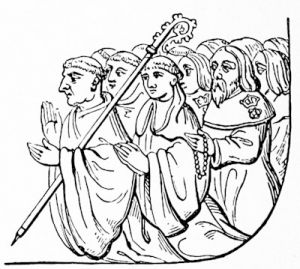In ancient times, every church had kept a “Book of Life”, or register which recorded the names of those souls chosen by  the church and king to be prayed for. The Book of Life is a real life book based on the teachings of Jesus Christ, those who serve Christ, and the future kingdom of heaven on earth in which their names have been inscribed to inherit the future age. The names contained in this book are a list of souls written down, who through merit and service to the church and king, had their names written down as worthy souls to be prayed for, and were promised a future place in the heavenly kingdom.
the church and king to be prayed for. The Book of Life is a real life book based on the teachings of Jesus Christ, those who serve Christ, and the future kingdom of heaven on earth in which their names have been inscribed to inherit the future age. The names contained in this book are a list of souls written down, who through merit and service to the church and king, had their names written down as worthy souls to be prayed for, and were promised a future place in the heavenly kingdom.
The Book of Life is the set of names of those who will live with God forever in heaven. It is the roll of those who are saved. This Book of Life is also mentioned in Revelation 3:5; 20:12; and Philippians 4:3. In Christianity and Judaism, the Book of Life (Hebrew: ספר החיים, transliterated Sefer HaChaim; Greek: βιβλίον τῆς ζωῆς Biblíon tēs Zōēs) is the book in which God records the names of every person who is destined for Heaven or the World to Come.
IS THE BOOK OF LIFE A REAL BOOK?
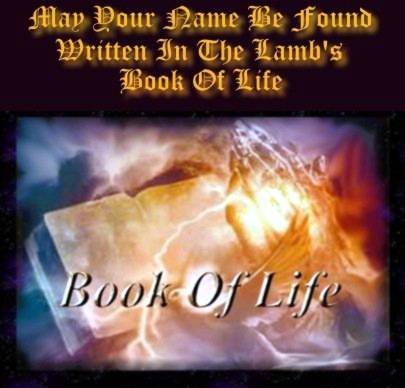 Yes, it is a real book, or should I say books that have been preserved by various tribes and the ruling elite over approximately the last two thousand years. It is also known in scripture as the Book of the Living, Book of the Lord, Book of the Lamb, and in true history as the Bederoll, or Bede-Roll. These Bederolls were books that were generally kept in the monasteries and the courts of kings and princes, as a list of persons whose service to the crown and church was highly valued. People such as bishops, priests, governors, officers of their armies, and knights could often find their names written in the Bederoll or Book of Life.
Yes, it is a real book, or should I say books that have been preserved by various tribes and the ruling elite over approximately the last two thousand years. It is also known in scripture as the Book of the Living, Book of the Lord, Book of the Lamb, and in true history as the Bederoll, or Bede-Roll. These Bederolls were books that were generally kept in the monasteries and the courts of kings and princes, as a list of persons whose service to the crown and church was highly valued. People such as bishops, priests, governors, officers of their armies, and knights could often find their names written in the Bederoll or Book of Life.
When it is said that anyone is written in the book of life, it means that he particularly belongs to God, and is enrolled among the number of his friends and servants written in heaven, “in the book of life.” Originally, this was said not to be written by pen and ink, such as the Apostle Titus had said, but by the foreknowledge and election of God. Euthymius had said, “Ye are citizens inscribed on the roll of an eternal city, not after the manner of men, but written down in the remembrances of God.” Saint Bede says these names must be written down; ” because God can forget, but that His purpose may stand fast forever.”
Saint Bede further alludes to the Book of Life by how many people are relieved before the day of judgment, by the prayers,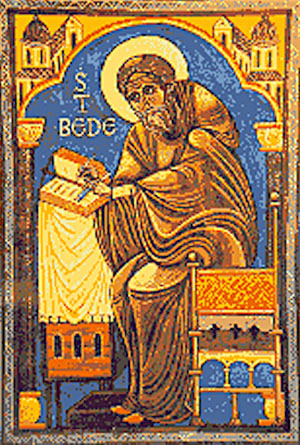 alms and fasting, of the living, and more especially by masses; “That vale you saw so dreadful for consuming flames and cutting cold, is the place in which the souls of those are tried and punished, who, delaying to confess and amend their crimes, at length have recourse to repentance at the point of death, and so depart this life; but nevertheless because they, even at their death, confessed and repented, they shall all be received into the kingdom of heaven at the day of judgment; but many are relieved before the day of judgment, by the prayers, alms, and fasting, of the living, and more especially by masses.(1)
alms and fasting, of the living, and more especially by masses; “That vale you saw so dreadful for consuming flames and cutting cold, is the place in which the souls of those are tried and punished, who, delaying to confess and amend their crimes, at length have recourse to repentance at the point of death, and so depart this life; but nevertheless because they, even at their death, confessed and repented, they shall all be received into the kingdom of heaven at the day of judgment; but many are relieved before the day of judgment, by the prayers, alms, and fasting, of the living, and more especially by masses.(1)
As I mentioned above, what is known as the Book of Life in scripture, was in real life called the Bederoll; and sometimes referred to as the “death-bill” which was sent from one Catholic monastery to another as a reminder of the eternal agreement to pray for the departed fellow-members. These rolls were sometimes richly illustrated, and in passing from one religious house to another, they were filled in with verses in honour of the deceased. When it is said, “blotted out of the book of life,” this signifies being erased from the list of God’s friends and servants; as those who are guilty of treachery are struck off the roll of officers belonging to a prince. Also, based on my research of these rolls over time, they have changed hands, been destroyed, and/or forged based on whose sword had conquered the previous possessors of these said books.
The first mention that I have found of the Book of Life being as an actual real life book that was kept in a monastery to write down the names of those who served, is mentioned in the 8th century by the Father of English History and Doctor of the Church, Saint Bede who had requested that his name be inscribed upon the roll of the Lindisfarne which was kept on the altar. Bede calls it the “Liber Vitae,” Latin for the “Book of Life.” One of these books survives to this day, and is known as the Durham Liber Vitae which has been dated to approximately the 8th and 9th centuries. You will find on the Liber Vitae, that there is a list of priests, and two are named Bede which I would assume would be Saint Bede and his son, or his father.
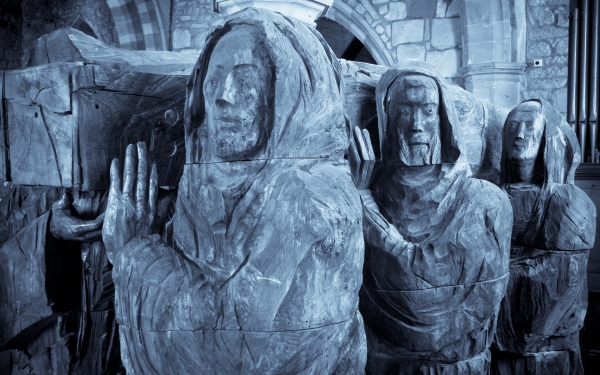 This makes perfect sense, since Bede had lived near the Holy Island of Lindisfarne in Northumberland, which was the home base for Christian evangelist in the North of England. This is where the Celtic Culdee monks from the island of Iona had settled such as the founder of Lindisfarne, Saint Aidan who was credited with restoring Christianity to Northumbria. Northumberland’s patron saint and Bishop of Lindisfarne, Saint Cuthbert, was a monk and later abbot of the monastery, and his miracles and life are recorded by the Venerable Bede.
This makes perfect sense, since Bede had lived near the Holy Island of Lindisfarne in Northumberland, which was the home base for Christian evangelist in the North of England. This is where the Celtic Culdee monks from the island of Iona had settled such as the founder of Lindisfarne, Saint Aidan who was credited with restoring Christianity to Northumbria. Northumberland’s patron saint and Bishop of Lindisfarne, Saint Cuthbert, was a monk and later abbot of the monastery, and his miracles and life are recorded by the Venerable Bede.
In Bede’s time, the church in England and France under the unified Catholic banner were just beginning to sprout its first roots. People like Bede would have known to keep track themselves of the various church transcripts, and records of all its contracts, business dealings and promises they had made with various kings, princes, and servants of the church. These agreements were taken seriously by all the royal parties involved, and why Rome would have placed the monasteries in charge of these records, and would have also been sent to the Archives at Rome.
The venerable Saint Bede would have a key position in compiling the Book of Life for the English Kings and Princes who had joined the church, by agreeing to join the Catholic Brotherhood by being converted to Christianity, due to his position with the church at the time. These facts can be confirmed by the time he had lived, his royal contacts in England, France and Rome, and the information that they had supplied him with in order to complete his most famous work, Historia ecclesiastica gentis Anglorum (The Ecclesiastical History of the English People). Bede was the first author to write a history of England, and in doing so he became the Father of English History. Not only was he the Father of English History, but we can also say he is the Father of the modern-day Book of Life which was named after him in his honor for doing so.
After the death of Bede, the Latin name of the Liber Vitae would become known as the Bederoll in honor of Saint Bede. There was also a cult, or what we can call today, a secret society and order named after Saint Bede that was called the Bedesmen, King’s Bedesman and/or the Blue-gown Beggars. They were one of the first true secret societies formed in conjunction with the church, and also some of the first licensed mendicants or physicians under the king in the Catholic countries where they had operated such as in England, Scotland and France. The King’s Bedesmen were formed based on the teachings of Bede, and to also honor his great work that he had created during his life serving the brotherhood.
They were one of the most powerful secret societies by virtue of the 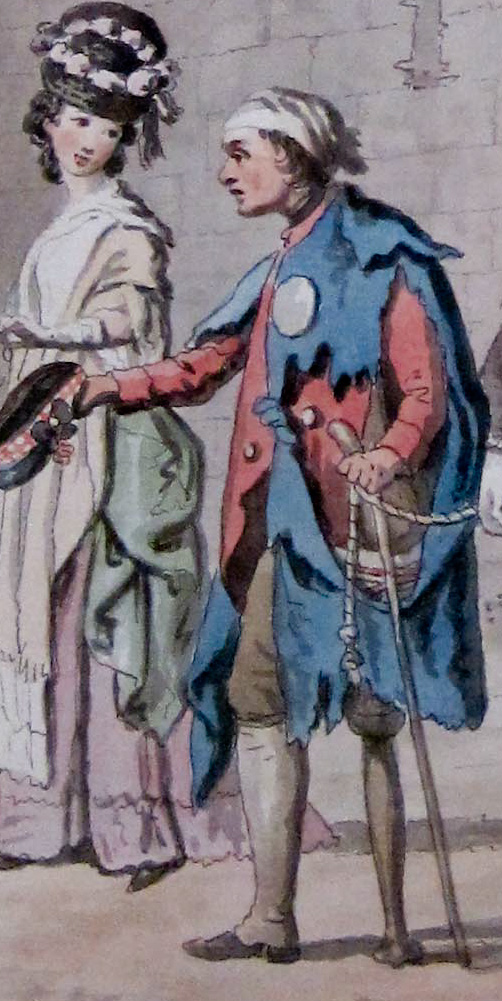 aristocracy of the order. They were essentially the Kings made men who were employed as sovereigns under the crown. One of the first mention of them, is during in 936 when King Eathelstan had commanded a church be built dedicated to St Peter that provided 206 bedesmen served by a master, 13 brethren, four seculars, eight sisters, thirty choristers, and six servites. (2)
aristocracy of the order. They were essentially the Kings made men who were employed as sovereigns under the crown. One of the first mention of them, is during in 936 when King Eathelstan had commanded a church be built dedicated to St Peter that provided 206 bedesmen served by a master, 13 brethren, four seculars, eight sisters, thirty choristers, and six servites. (2)
Essentially, they were the Freemasons of the medieval ages because they were given special status by the king to not only legally beg for money, but they were also given special badges of freedom that would be akin to a Masonic pin today, that said on them “Pass and Repass.” This gave the King’s Bedesmen the legal rites to move freely from town to town, when almost all other people were restricted from these types of freedoms. In doing so, they were also like tax collectors are today for the IRS because they would collect tithes and alms from church parishioners, and they were also secret spies to the king and church. As part of their service to the state, on the king’s birthday, each one of the Bedesman would receive a new blue gown, a loaf of bread, a bottle of ale, and a leathern purse containing a penny for every year of the king’s life.
According to Saint Bede, the Anglo-Saxon royalty in medevil England had “believed and were baptized, being preordained to eternal life.” Hence, when these princes and kings were baptized and made agreements with the church, they were under the assumption that these contracts were immortal, and by them being baptized, this preordained to eternal life to the heavenly kingdom on earth to live forever. Bede had said; “Among those who, according to Bede, at this time “believed and were baptized, being preordained to eternal life,” were Osfrid and Eadfrid, Edwin’s sons whom he had by Quenburga, the daughter of King Cearl. Subsequently the children he had by Ethelberga, namely, Edilhun and Edilthryd, and another son named Wuscfrea, were also baptized. Of these latter the two former died when young (albati adhuc rapti sunt) and were buried at York.2 So great was the fervour for the faith, that on one occasion when Paulinus went with the King and Queen to the royal vill (in villam regiam), which was called Adgefrin, i.e. Ad Gefrin, now called Yeverin, in Glendale,8 he spent six-and-thirty days from morning till night in catechising and in baptizing in the river Glen (in fluvio Gleni). (4)
This secret society was formed by the efforts of Boniface and Alcuin, both of whom promoted the brotherhood in England, France and Germany which became very prominent with the royalty and church in England around the 10th-century. Later by the 14th century, the Bedesmen had spread to many of the cathedrals of England. The Bishop of York and Worcester (c. 1008–1095), Wulfstan was a secret initiate of the Bedesmen, and dedicated a church to Saint Bede in 1062 immediately upon his appointment as bishop there. It was through the global missionary efforts of people such as Bede, Alcuin, Boniface, and Wulfstan that the Roman-Celtic Church would enter into peace agreements with various tribes, kings and princes. Kings such as Æthelred the Unready, Cnut the Great of England, and the Franks with King Charles the Great of the Carolingian dynasty. After the death of Bede, his students, son and fraternity brothers such as Alcuin and Boniface would rename the Book of Life in order to call it the “Bederoll” after its creator and founder, the Venerable Saint Bede.
The founder of the Bedesmen, Saint Bede had written about these rites; “The belief of our forefathers in the efficacy of prayers for the dead is most strikingly shown by the liturgy and ritual, in particular by the collects at Mass and by the burial service. See, for instance, the prayers in the Bobbio Missal, the Durham Ritual, Leofric’s Missal, the Salisbury Rite, the Stowe Missal, etc. But it should also be noted that this belief was clearly formulated, and that is was expressed by the people at large in numerous practices and customs.
The Venerable Bede further stated that “some who for their good works have been preordained to the lot of the elect, but whom because of some bad deeds stained with which they went forth out of the body, are after death seized upon by the flames of the purgatorial fire, to be severely chastised, and either are being cleansed until the day of judgment from the filth of their vices by this long trial, or, being set free from punishment by the prayers, the alms-deeds, the fasts, the tears of faithful friends, they enter, undoubtedly before that time, into the rest of the blessed” (Homily xlix, ed. Martène, Thes. Aneed., p. 326).(5)
The keeping of the Book of Life, or Bederoll in Catholic monasteries was a tradition that lasted approximately 7 centuries from the time of Bede, to the schism of the Catholic Church and Church of England in the time of the English Norman King Henry VIII. Most of the ancient Bederolls relating to the rites of the Priory of Durham that included the names of various Anglo-Saxon and Norman tribes and royalty were preserved by the church up until their dissolution by Henry VIII. This was when the church had disagreed with one of the Kings many divorces in his attempts to have a legitimate heir to the crown, and they had not supported him in his request for their blessings to divorce his 5th wife.
These disagreements resulted in King Henry deciding to officially split from Rome to form the Church of England, with him as its head. By doing this, he no longer had to ask or answer to Rome of the Catholic clergy. The church he had started became known as the Protestant church, or the Anglican Church. Henry VIII went so far to close down and loot all the Catholic monasteries, which would have included all the Bederolls (Book of Life) and records of the souls who served the church that were kept for approximately 700 years.
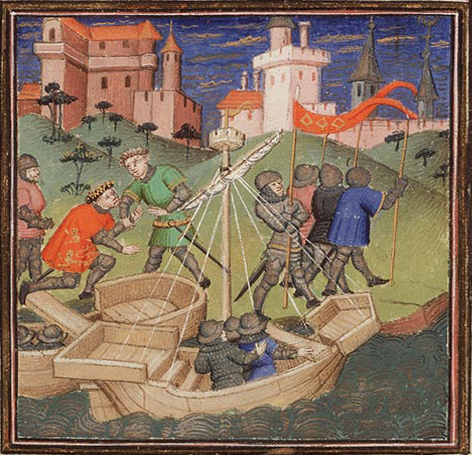 REAL LIFE EVIDENCE OF THE BOOK OF LIFE (BEDEROLL)
REAL LIFE EVIDENCE OF THE BOOK OF LIFE (BEDEROLL)
In addition to the Anglo-Saxon Bederolls mentioned above, there is also the famous Norman Roll of Battle Abbey, now kept in the British Museum that is believed to be William the Conqueror’s foundation charter. The Battle Abbey is located in the small town of Battle in East Sussex, England. In 1070, Pope Alexander II had ordered the Normans to do penance for killing so many people during their conquest of England. William the Conqueror agreed and started to build the abbey which was completed in 1094.
The Roll of Battle Abbey is said to be an authentic record of the knights and men who served King William during his conquest of England, in which the monks prayed for the souls of those “who by their labour and valour had helped to win the kingdom.” The altar at the Abbey had displayed the Norman conqueror’s sword, his coronation robe, and the Bederoll. A great explanation of this Bederoll of William the Conqueror is given by the Duchess of Cleveland, Catherine Lucy Wilhelmina Powlett whose family owned and resided at Battle Abbey for many years, in her book “The Battle Abbey Roll: With Some Account of the Norman Lineages, Volume 1;
The great Sussex Abbey that was “the token and pledge of the Royal Crown,” had been intended to be not only a memorial of his victory, but a chantry for the slain; and the names of his companions-in-arms, enshrined on this bede-roll, might thus be read out in the church on special occasions, and notably on the anniversary feast of St. Celict. It was most likely originally copied from the muster-roll of the Norman knights, that had been prepared by the Duke’s orders before his embarkation, and was called over in his presence on the field of battle, the morning after it had been fought. The list, thus composed, was inscribed on a roll of parchment, and hung up in the Abbey Minster, with this superscription:
“Dicitur a bello ‘BELLUM’ locus hic, quia bello
Angligenae victi sunt in morte relicti,
Martyris in Christi festo cecidere Calixti.
Sexagenus erat sextus millesimus annus.
Cum pereunt Angli, Stella monstrante cometa.”With it were preserved two other mementos of the conquest of England. King William’s sword,[6] and the robe he had worn at his coronation, and specially bequeathed to the monks by his will. This “royal pallium was beautifully ornamented with gold and very costly gems, and three hundred amulets suitably fabricated of gold and silver, many of which were attached to chains of those metals, and contained innumerable relics of the saints;” and he also gave “a feretory in the form of an altar, in which likewise were many relics, and upon which, in his expedition, mass had been accustomed to be celebrated.”—Battel Abbey Chronicle. These relics, according to Mr. Lower (the translator of the Chronicle) “must have been the same with those which William had, in 1065, surreptitiously introduced under the portable altar upon which he had compelled Harold to take a solemn oath to assist him in his designs upon England. In the Bayeux Tapestry, where the scene is represented, Harold is placing his right hand upon an altar in form of a feretory.”(6)
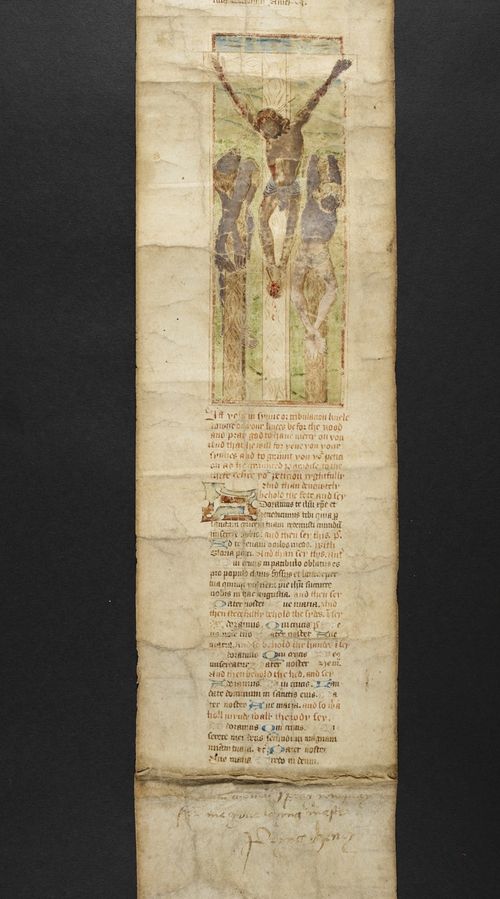 Before Henry VIII had the schism with Rome, he was a devout Catholic who also believed in the Book of Life (Bederoll). After all, he was a direct descendant of William the Conqueror who started the Bederoll for his family called the Battle Abbey Roll. It is now known when he was King of Wales, that he had an official prayer role or Bederoll that had been decorated with Henry’s official badge of arms and the Tudor rose (pictured to the right). King Henry VIII’s prayer roll even recently made the news in 2009. Its whereabouts were unknown until it emerged from the underground around 1850, when a wealthy merchant from Liverpool had donated it to a seminary for the formation of Catholic priests in Durham called St Cuthbert’s College or the Ushaw College. In 2009, the Ushaw College had loaned it to the British Library where it is currently on display.
Before Henry VIII had the schism with Rome, he was a devout Catholic who also believed in the Book of Life (Bederoll). After all, he was a direct descendant of William the Conqueror who started the Bederoll for his family called the Battle Abbey Roll. It is now known when he was King of Wales, that he had an official prayer role or Bederoll that had been decorated with Henry’s official badge of arms and the Tudor rose (pictured to the right). King Henry VIII’s prayer roll even recently made the news in 2009. Its whereabouts were unknown until it emerged from the underground around 1850, when a wealthy merchant from Liverpool had donated it to a seminary for the formation of Catholic priests in Durham called St Cuthbert’s College or the Ushaw College. In 2009, the Ushaw College had loaned it to the British Library where it is currently on display.
King Henry VIII’s roll is very revealing because it proves that the Book of Life, or the Bederoll was an actual real life record of their sacred teachings in prayer, sacred royal blood, and the belief in a heavenly kingdom on earth in which they were all souls who played a part in building this heaven on earth, and for doing so, their names were written in these books as contractual agreements with the church and state. King Henry VIII’s roll listed thirteen illuminations — the promise that the recital of certain of the prayers will offer safety from physical danger, sickness or disease; others will shorten, by specified amounts, and the agony of Purgatory. It also contained images of Christ, focusing on the Passion, its Instruments and the Sacred Blood, as well as depictions of various saints and their martyrdoms.
In addition to this find proving these books or rolls did in fact exist, there is also the London fraternity known as, “The Bede Roll Of The Fraternity Of St Nicholas,” with a list of 7000 names who were members of the fraternity between 1449 and 1521. This edition of the Bede roll in London has been published in two volumes; the first volume contains the text of the roll, and the second volume provides an index to the nearly 7000 names. Members were the clerks, their wives, nobility, high-ranking clergy with the large majority of the membership consisting of middle-ranking Londoners.
The ancient Bederoll of King Henry VII also includes prayers to King Henry VI.
The first name on the Roll is that of “Henry VI., King of England, France, and Lord of Ireland;” the next, “John Mowbray, Duke of Norfolk” [died in 1461, “a special aider of the King” (Edward IV.) Fabyan says]; then ” Richard Neville, Earl of Salisbury” [created 1442. He was beheaded by the Lancastrians after Wakefield Green in 146o, and was succeeded in his titles by his son, Richard Neville, Earl of Warwick, better known as the Kingmaker]. It is interesting to see here the names of two whose after careers were in such deadly antagonism to Henry. Then “Robert Neville, Bishop of Durham” follows, who died in 1457. The analysis of the Bede Roll shows the number of titled and untitled which follows.
On page 5 the Roll of the departed begins, headed by the name of ” Henry V., King of England and France, and Lord of Ireland.” Then follow the names of his three brothers, uncles to Henry VI., and of the great Chancellor, tutor of Henry’s father, all well-known to readers of English History; “Thomas, Duke of Clarence” (died 1431); “John, Duke of Bedford” (died 1435); “Henry Beaufort, Bishop of Winchester and Cardinal of England ” (died April 11, 1447) and Humphrey, Duke of Gloucester” (“the good Duke Humphrey,” died February 25, 1447). “Richard Muntage, Viscount or Sheriff and Mr. Richard Fleming, Bishop of Lincoln [died1431]. There is no mention, in either of the two letters patent granted to the Fraternity, of any special remembrance of the King’s father or uncles, although in one granted in 1442 to the Fraternity of S. Mary and S. Giles without Cripplegate, provision is made for a special mass for the soul of Henry V. to be celebrated on the eve of S. Giles, the anniversary of his death.
In 1480 are entered on the Roll of the living, “Elizabeth, Queen of England,” in beautiful letters of gold; in blue, “Anna, Duchess of Bokyngham” and “Margaret, Countess of Richmond,” mother of Henry Tudor, Earl of Richmond, afterwards Henry VII. In the following year, ” Anna, Duchess of Bokyngham ” is found among those who have passed away. She was a sister of the Nevilles whose names are entered at the opening of the Roll, and of the King’s mother, Cecily, Duchess of York. Her husband, the Duke of Buckingham, was slain at Northampton in 146o. She married, as a second husband, Walter Blount, Lord Mountjoy, aad is said to have died on the ides of September, 148o.(4)
THE FINAL JUDGMENT AND THE BOOK OF LIFE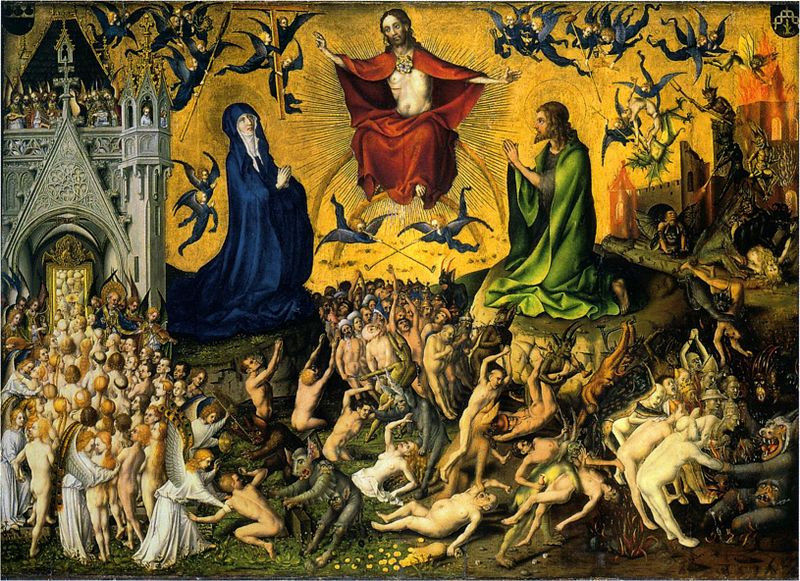
In both the Old Testament and New Testament, the Book of Life records the names of the elect into an honor roll prepared for the judgment of nations. Jesus Christ alludes to the Book of Life in Luke 10:20, when he tells the 70 disciples to rejoice because “your names are written in heaven.” Paul says the names of his fellow missionary workers “are in the Book of Life.” (Philippians 4:3, NIV)
In the Psalms, those who are obedient to God among the living are considered worthy. In other occurrences in the Old Testament, “opening of the books” typically refers to the Final Judgment. The prophet Daniel mentions a heavenly court (Daniel 7:10).
Then I saw a great white throne and Him who sat upon it, from whose presence earth and heaven fled away, and no place was found for them. And I saw the dead, the great and the small, standing before the throne, and books were opened; and another book was opened, which is the book of life; and the dead were judged from the things which were written in the books, according to their deeds. And the sea gave up the dead which were in it, and death and Hades gave up the dead which were in them; and they were judged, every one of them according to their deeds. (Revelation 20:11-13)
Just as the weeds are collected and burned up with fire, so will it be at the end of the age. The Son of Man will send his angels, and they will collect out of his kingdom all causes of sin and all evildoers, and they will throw them into the furnace of fire, where there will be weeping and gnashing of teeth. Then the righteous will shine like the sun in the kingdom of their Father. Let anyone with ears listen! (Mathew 13:40-43)
SOURCES:
1. The Venerable Bede’s ecclesiastical history of England By Saint Bede
2. The Catholic Encyclopedia: An International Work of Reference on …, Volume 7
3. Volume 7 By Knights of Columbus. Catholic Truth Committee
3. Saint Augustine of Canterbury By Sir Henry Hoyle Howorth
4. The Catholic encyclopedia: an international work of reference on …, Volume 4 edited by Charles George Herbermann
5. Some Account of Parish Clerks, More Especially of the Ancient Fraternity …
By James Christie (Chaplain.)
6. The Battle Abbey Roll: With Some Account of the Norman Lineages, Volume 1
By Catherine Lucy Wilhelmina Powlett Duchess of Cleveland

Moe is the founder of GnosticWarrior.com. He is a father, husband, author, martial arts black belt, and an expert in Gnosticism, the occult, and esotericism.

